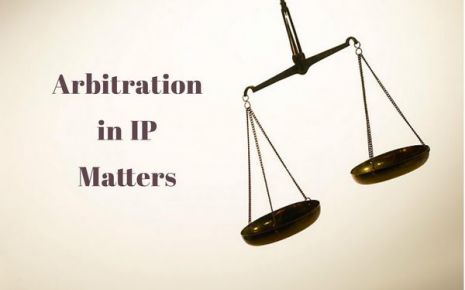Corporate Restructuring and Insolvency: An Overview
Corporate restructuring refers to the process of reorganizing a company's
structure, operations, finances, or other aspects to improve its financial
performance and competitiveness. This can involve changes to the company's
capital structure, streamlining of operations, divesting of non-core assets, and
other measures. The goal of corporate restructuring is to make the company more
efficient, better positioned for growth, and ultimately, more valuable for
stakeholders.
Insolvency, on the other hand, refers to a state in which a company is unable to meet its financial obligations as they become due. Insolvency can occur as a result of many factors, including economic downturns, increased competition, and mismanagement. When a company becomes insolvent, its ability to pay its debts and continue operations is severely impacted.
The connection between corporate restructuring and insolvency lies in the fact that restructuring can often be a means of avoiding insolvency. By reorganizing its operations and finances, a company can regain its financial stability and viability. However, if the restructuring efforts are unsuccessful, the company may ultimately be forced to seek insolvency protection.
The first step in the restructuring process is to assess the company's financial situation and determine the root cause of its financial distress. This may involve reviewing financial statements, conducting operational audits, and assessing the company's competitive position.
Development of a restructuring plan:
Once the assessment is complete, a restructuring plan is developed. The plan should outline the steps that will be taken to address the company's financial problems and improve its financial performance. This may involve changes to the company's capital structure, the sale of non-core assets, or the implementation of cost-saving measures.
Implementation of the restructuring plan:
Once the restructuring plan has been developed, it must be implemented. This may involve negotiating with creditors and other stakeholders, seeking court approval, and communicating the restructuring plan to employees and other stakeholders.
Monitoring and evaluation:
The final step in the restructuring process is to monitor and evaluate the results of the restructuring efforts. This may involve reviewing financial statements, tracking operational performance, and assessing the company's overall financial health.
Insolvency Process
If a company is unable to successfully restructure and becomes insolvent, it may be forced to seek insolvency protection. The process of insolvency typically involves the following steps:
Filing for insolvency protection:
The first step in the insolvency process is to file for insolvency protection. This may involve filing for bankruptcy in the case of a company in the United States, or seeking protection under a similar statute in other countries.
Appointment of an insolvency practitioner:
Once insolvency protection has been sought, an insolvency practitioner is appointed to oversee the process. This person is responsible for managing the company's assets, negotiating with creditors, and making decisions about the company's future.
Development of a plan for the company's future:
The insolvency practitioner will work with the company's stakeholders to develop a plan for the company's future. This may involve selling assets, restructuring the company's finances, or seeking a buyer for the company as a whole.
Implementation of the insolvency plan:
Once the insolvency plan has been developed, it must be implemented. This may involve negotiating with creditors and other stakeholders, seeking court approval, and communicating the plan to employees and other stakeholders.
Repayment of debts:
If the company's assets are sufficient, the insolvency practitioner will prioritize the repayment of debts to creditors. This may involve selling assets, liquidating the company's operations, or using other means to raise funds.
Dissolution or sale:
If the company is unable to repay its debts, it may be dissolved, and its assets may be sold to repay creditors. In some cases, the company may be sold as a going concern to another company or investor, which would allow it to continue operations under new ownership.
The outcomes of the insolvency process will depend on the specific circumstances of each case. However, the goal is always to repay creditors as much as possible and to minimize the impact of the company's insolvency on stakeholders and the wider economy.
Conclusion
Corporate restructuring and insolvency are closely related concepts that are designed to address financial distress and improve a company's financial performance. The process of corporate restructuring is designed to help a company regain its financial stability and viability, while the process of insolvency is designed to repay creditors and minimize the impact of the company's financial problems on stakeholders.
Both processes can be complex and involve a range of legal, financial, and operational considerations. However, they are important tools for ensuring that companies can continue to operate and contribute to the economy, even in challenging circumstances.
Insolvency, on the other hand, refers to a state in which a company is unable to meet its financial obligations as they become due. Insolvency can occur as a result of many factors, including economic downturns, increased competition, and mismanagement. When a company becomes insolvent, its ability to pay its debts and continue operations is severely impacted.
The connection between corporate restructuring and insolvency lies in the fact that restructuring can often be a means of avoiding insolvency. By reorganizing its operations and finances, a company can regain its financial stability and viability. However, if the restructuring efforts are unsuccessful, the company may ultimately be forced to seek insolvency protection.
Corporate Restructuring Process
The corporate restructuring process typically involves the following steps:
Assessment:The first step in the restructuring process is to assess the company's financial situation and determine the root cause of its financial distress. This may involve reviewing financial statements, conducting operational audits, and assessing the company's competitive position.
Development of a restructuring plan:
Once the assessment is complete, a restructuring plan is developed. The plan should outline the steps that will be taken to address the company's financial problems and improve its financial performance. This may involve changes to the company's capital structure, the sale of non-core assets, or the implementation of cost-saving measures.
Implementation of the restructuring plan:
Once the restructuring plan has been developed, it must be implemented. This may involve negotiating with creditors and other stakeholders, seeking court approval, and communicating the restructuring plan to employees and other stakeholders.
Monitoring and evaluation:
The final step in the restructuring process is to monitor and evaluate the results of the restructuring efforts. This may involve reviewing financial statements, tracking operational performance, and assessing the company's overall financial health.
Insolvency Process
If a company is unable to successfully restructure and becomes insolvent, it may be forced to seek insolvency protection. The process of insolvency typically involves the following steps:
Filing for insolvency protection:
The first step in the insolvency process is to file for insolvency protection. This may involve filing for bankruptcy in the case of a company in the United States, or seeking protection under a similar statute in other countries.
Appointment of an insolvency practitioner:
Once insolvency protection has been sought, an insolvency practitioner is appointed to oversee the process. This person is responsible for managing the company's assets, negotiating with creditors, and making decisions about the company's future.
Development of a plan for the company's future:
The insolvency practitioner will work with the company's stakeholders to develop a plan for the company's future. This may involve selling assets, restructuring the company's finances, or seeking a buyer for the company as a whole.
Implementation of the insolvency plan:
Once the insolvency plan has been developed, it must be implemented. This may involve negotiating with creditors and other stakeholders, seeking court approval, and communicating the plan to employees and other stakeholders.
Repayment of debts:
If the company's assets are sufficient, the insolvency practitioner will prioritize the repayment of debts to creditors. This may involve selling assets, liquidating the company's operations, or using other means to raise funds.
Dissolution or sale:
If the company is unable to repay its debts, it may be dissolved, and its assets may be sold to repay creditors. In some cases, the company may be sold as a going concern to another company or investor, which would allow it to continue operations under new ownership.
The outcomes of the insolvency process will depend on the specific circumstances of each case. However, the goal is always to repay creditors as much as possible and to minimize the impact of the company's insolvency on stakeholders and the wider economy.
Conclusion
Corporate restructuring and insolvency are closely related concepts that are designed to address financial distress and improve a company's financial performance. The process of corporate restructuring is designed to help a company regain its financial stability and viability, while the process of insolvency is designed to repay creditors and minimize the impact of the company's financial problems on stakeholders.
Both processes can be complex and involve a range of legal, financial, and operational considerations. However, they are important tools for ensuring that companies can continue to operate and contribute to the economy, even in challenging circumstances.
Law Article in India
Legal Question & Answers
Lawyers in India - Search By City
LawArticles
How To File For Mutual Divorce In Delhi

How To File For Mutual Divorce In Delhi Mutual Consent Divorce is the Simplest Way to Obtain a D...
Increased Age For Girls Marriage

It is hoped that the Prohibition of Child Marriage (Amendment) Bill, 2021, which intends to inc...
Facade of Social Media

One may very easily get absorbed in the lives of others as one scrolls through a Facebook news ...
Section 482 CrPc - Quashing Of FIR: Guid...

The Inherent power under Section 482 in The Code Of Criminal Procedure, 1973 (37th Chapter of t...
The Uniform Civil Code (UCC) in India: A...

The Uniform Civil Code (UCC) is a concept that proposes the unification of personal laws across...
Role Of Artificial Intelligence In Legal...

Artificial intelligence (AI) is revolutionizing various sectors of the economy, and the legal i...








Please Drop Your Comments